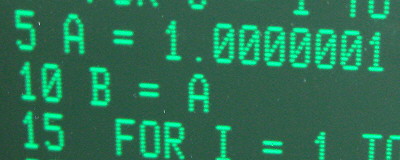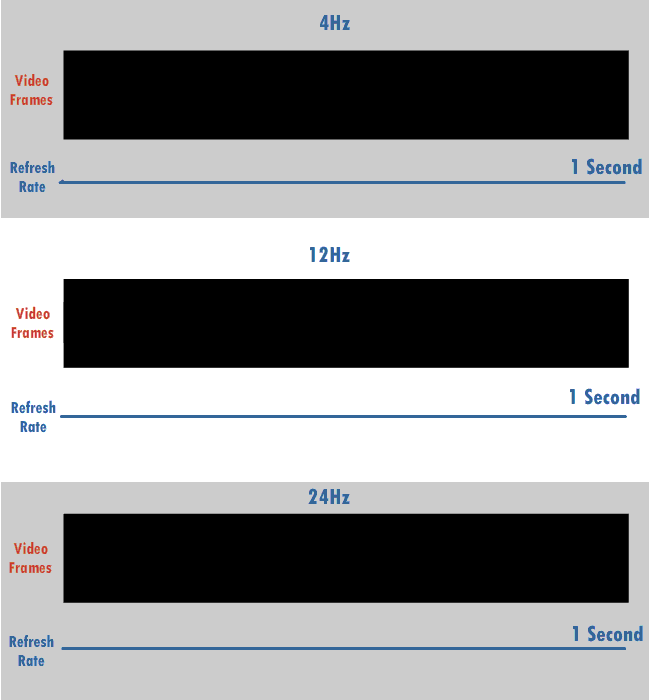|
CCIR System M
CCIR System M, sometimes called 525–line, NTSC, NTSC-M, or CCIR-M, is the analog broadcast television system approved by the FCC (upon recommendation by the National Television System Committee - NTSC) for use in the United States since July 1, 1941, replacing the 441-line TV system introduced in 1938. It is also known as EIA standard 170. System M comprises a total of 525 interlaced lines of video, of which 486 contain the image information, at 30 frames per second. Video is amplitude modulated and audio is frequency modulated, with a total bandwidth of 6 MHz for each channel, including a guard band. It was also adopted in the Americas and Caribbean; Myanmar, Philippines, South Korea, Taiwan and Japan (here with minor differences, informally referred to as ''System J)''. System M doesn't specify a color system, but NTSC color encoding was normally used, with some exceptions: NTSC-J in Japan, PAL-M in Brazil and SECAM-M in Cambodia, Laos and Vietnam (see '' ... [...More Info...] [...Related Items...] OR: [Wikipedia] [Google] [Baidu] |
NTSC
NTSC (from National Television System Committee) is the first American standard for analog television, published and adopted in 1941. In 1961, it was assigned the designation System M. It is also known as EIA standard 170. In 1953, a second NTSC standard was adopted, which allowed for color television broadcast compatible with the existing stock of black-and-white receivers. It is one of three major color formats for analog television, the others being PAL and SECAM. ''NTSC color'' is usually associated with the System M; this combination is sometimes called NTSC II. The only other broadcast television system to use NTSC color was the System J. Brazil used System M with PAL color. Vietnam, Cambodia and Laos used System M with SECAM color – Vietnam later started using PAL in the early 1990s. The NTSC/System M standard was used in most of the Americas (except Argentina, Brazil, Paraguay, and Uruguay), Myanmar, South Korea, Taiwan, Philippines, Japan, and some Pacific Isl ... [...More Info...] [...Related Items...] OR: [Wikipedia] [Google] [Baidu] |
Raster Scan
A raster scan, or raster scanning, is the rectangular pattern of image capture and reconstruction in television. By analogy, the term is used for raster graphics, the pattern of image storage and transmission used in most computer bitmap image systems. The word ''wiktionary:raster, raster'' comes from the Latin word ''wiktionary:rastrum, rastrum'' (a rake), which is derived from ''wiktionary:radere, radere'' (to scrape); see also rastrum, an instrument for drawing musical staff lines. The pattern left by the lines of a rake, when drawn straight, resembles the parallel lines of a raster: this line-by-line scanning is what creates a raster. It is a systematic process of covering the area progressively, one line at a time. Although often a great deal faster, it is similar in the most general sense to how one's gaze travels when one reads lines of text. In most modern graphics cards the data to be drawn is stored internally in an area of semiconductor memory called the framebuffer. ... [...More Info...] [...Related Items...] OR: [Wikipedia] [Google] [Baidu] |
Refresh Rate
The refresh rate, also known as vertical refresh rate, vertical scan rate or vertical frequency in reference to terminology originating with the cathode-ray tubes (CRTs), is the number of times per second that a raster-based display device displays a new image. This is independent from frame rate, which describes how many images are stored or generated every second by the device driving the display. On CRT displays, higher refresh rates produce less flickering, thereby reducing eye strain. In other technologies such as liquid-crystal displays, the refresh rate affects only how often the image can potentially be updated. Non-raster displays may not have a characteristic refresh rate. Vector displays, for instance, do not trace the entire screen, only the actual lines comprising the displayed image, so refresh speed may differ by the size and complexity of the image data. For computer programs or telemetry, the term is sometimes applied to how frequently a datum is updated with a ... [...More Info...] [...Related Items...] OR: [Wikipedia] [Google] [Baidu] |
Digital Broadcasting
Digital broadcasting is the practice of using digital signals rather than analogue signals for broadcasting over radio frequency bands (radio broadcasting). Digital television broadcasting (especially satellite television) is widespread. Digital audio broadcasting is being adopted more slowly for radio broadcasting where it is mainly used in Satellite radio. Digital links, thanks to the use of data compression, generally have greater spectral efficiency than analog links. Content providers can provide more services or a higher-quality signal than was previously available. It is estimated that the share of digital broadcasting increased from 7% of the total amount of broadcast information in 2000, to 25% in 2007. Some countries have completed a Digital television transition. See also *Digital radio *Digital television * ATSC Standards *ATSC tuner *Digital Audio Broadcasting * Digital Radio Mondiale *Digital Video Broadcasting *HD Radio *Satellite radio *Satellite television ... [...More Info...] [...Related Items...] OR: [Wikipedia] [Google] [Baidu] |
CCIR System B
CCIR System B (originally known as the "Gerber Standard") was the 625-line VHF analog broadcast television system which at its peak was adopted by more than one hundred countries, either with PAL or SECAM colour. It is usually associated with CCIR System G for UHF broadcasts. System B was the first internationally accepted 625-line broadcasting standard in the world. A first 625-line system with a 8 MHz channel bandwidth was proposed at the CCIR Conference in Stockholm in July 1948 (based on 1946-48 studies in the Soviet Union by Mark KrivosheevOn the beginning of broadcast in 625-lines 60 year s ago, ''625'' magazine (in Russian). ). At a CCIR Geneva meeting in July 1950 Dr. Gerber (a Swiss ... [...More Info...] [...Related Items...] OR: [Wikipedia] [Google] [Baidu] |
Broadcast Television Systems
Broadcast television systems (or terrestrial television systems outside the US and Canada) are the encoding or formatting systems for the transmission and reception of terrestrial television signals. Analog television systems were standardized by the International Telecommunication Union (ITU) in 1961, with each system designated by a letter ( A- N) in combination with the color standard used (NTSC, PAL or SECAM) - for example PAL-B, NTSC-M, etc.). These analog systems for TV broadcasting dominated until the 2000s. With the introduction of digital terrestrial television (DTT), they were replaced by four main systems in use around the world: ATSC, DVB, ISDB and DTMB. Analog television systems Every analog television system bar one began as a black-and-white system. Each country, faced with local political, technical, and economic issues, adopted a color television standard which was grafted onto an existing monochrome system such as CCIR System M, using gaps in the v ... [...More Info...] [...Related Items...] OR: [Wikipedia] [Google] [Baidu] |
International Telecommunication Union
The International Telecommunication Union (ITU)In the other common languages of the ITU: * * is a list of specialized agencies of the United Nations, specialized agency of the United Nations responsible for many matters related to information and communications technology, information and communication technologies. It was established on 17 May 1865 as the International Telegraph Union, the first formal and permanent international organization. The organization significantly predates the UN, making it the oldest UN agency. Doreen Bogdan-Martin is the Secretary-General of ITU, the first woman to serve as its head. The ITU was initially aimed at helping connect Telegraphy, telegraphic networks between countries, with its mandate consistently broadening with the advent of new communications technologies; it adopted its current name in 1932 to reflect its expanded responsibilities over radio and the telephone. On 15 November 1947, the ITU entered into an agreement with the newly cr ... [...More Info...] [...Related Items...] OR: [Wikipedia] [Google] [Baidu] |
Vietnam
Vietnam, officially the Socialist Republic of Vietnam (SRV), is a country at the eastern edge of mainland Southeast Asia, with an area of about and a population of over 100 million, making it the world's List of countries and dependencies by population, fifteenth-most populous country. One of two communist states in Southeast Asia, Vietnam shares land borders with China to the north, and Laos and Cambodia to the west. It shares Maritime boundary, maritime borders with Thailand through the Gulf of Thailand, and the Philippines, Indonesia, and Malaysia through the South China Sea. Its capital is Hanoi and its largest city is Ho Chi Minh City. Vietnam was inhabited by the Paleolithic age, with states established in the first millennium BC on the Red River Delta in modern-day northern Vietnam. Before the Han dynasty's invasion, Vietnam was marked by a vibrant mix of religion, culture, and social norms. The Han dynasty annexed Northern and Central Vietnam, which were subs ... [...More Info...] [...Related Items...] OR: [Wikipedia] [Google] [Baidu] |
Laos
Laos, officially the Lao People's Democratic Republic (LPDR), is the only landlocked country in Southeast Asia. It is bordered by Myanmar and China to the northwest, Vietnam to the east, Cambodia to the southeast, and Thailand to the west and southwest. The country has a population of approximately eight million. Its Capital city, capital and most populous city is Vientiane. The country is characterized by mountainous terrain, Buddhist temples, including the UNESCO's World Heritage Site of Luang Prabang, and French colonial architecture. The country traces its historic and cultural identity to Lan Xang, a kingdom which existed from the 13th to 18th centuries. Through its location, the kingdom was a hub for overland trade. In 1707, Lan Xang split into three kingdoms: Kingdom of Luang Phrabang, Luang Prabang, Kingdom of Vientiane, Vientiane, and Kingdom of Champasak, Champasak. In 1893, these kingdoms were unified under French protection as part of French Indochina. Laos was und ... [...More Info...] [...Related Items...] OR: [Wikipedia] [Google] [Baidu] |
Cambodia
Cambodia, officially the Kingdom of Cambodia, is a country in Southeast Asia on the Mainland Southeast Asia, Indochinese Peninsula. It is bordered by Thailand to the northwest, Laos to the north, and Vietnam to the east, and has a coastline along the Gulf of Thailand in the southwest. It spans an area of , dominated by a low-lying plain and the confluence of the Mekong river and Tonlé Sap, Southeast Asia's largest lake. It is dominated by a tropical climate and is rich in biodiversity. Cambodia has a population of about 17 million people, the majority of which are ethnically Khmer people, Khmer. Its capital and most populous city is Phnom Penh, followed by Siem Reap and Battambang. In 802 AD, Jayavarman II declared himself king, uniting the warring Khmer princes of Chenla Kingdom, Chenla under the name "Kambuja".Chandler, David P. (1992) ''History of Cambodia''. Boulder, CO: Westview Press, . This marked the beginning of the Khmer Empire. The Indianised kingdom facilitated ... [...More Info...] [...Related Items...] OR: [Wikipedia] [Google] [Baidu] |
SECAM
SECAM, also written SÉCAM (, ''Séquentiel de couleur à mémoire'', French for ''sequential colour memory''), is an analog color television system that was used in France, Russia and some other countries or territories of Europe and Africa. It was one of three major analog color television standards, the others being PAL and NTSC. Like PAL, a SECAM picture is also made up of 625 interlaced lines and is displayed at a rate of 25 frames per second (except SECAM-M). However, due to the way SECAM processes color information, it is not compatible with the PAL video format standard. SECAM video is composite video; the luminance (luma, monochrome image) and chrominance (chroma, color applied to the monochrome image) are transmitted together as one signal. All the countries using SECAM have either converted to DVB, Digital Video Broadcasting (DVB), the new pan-European standard for digital television, or are currently in the Digital television transition, process of conversion. S ... [...More Info...] [...Related Items...] OR: [Wikipedia] [Google] [Baidu] |





